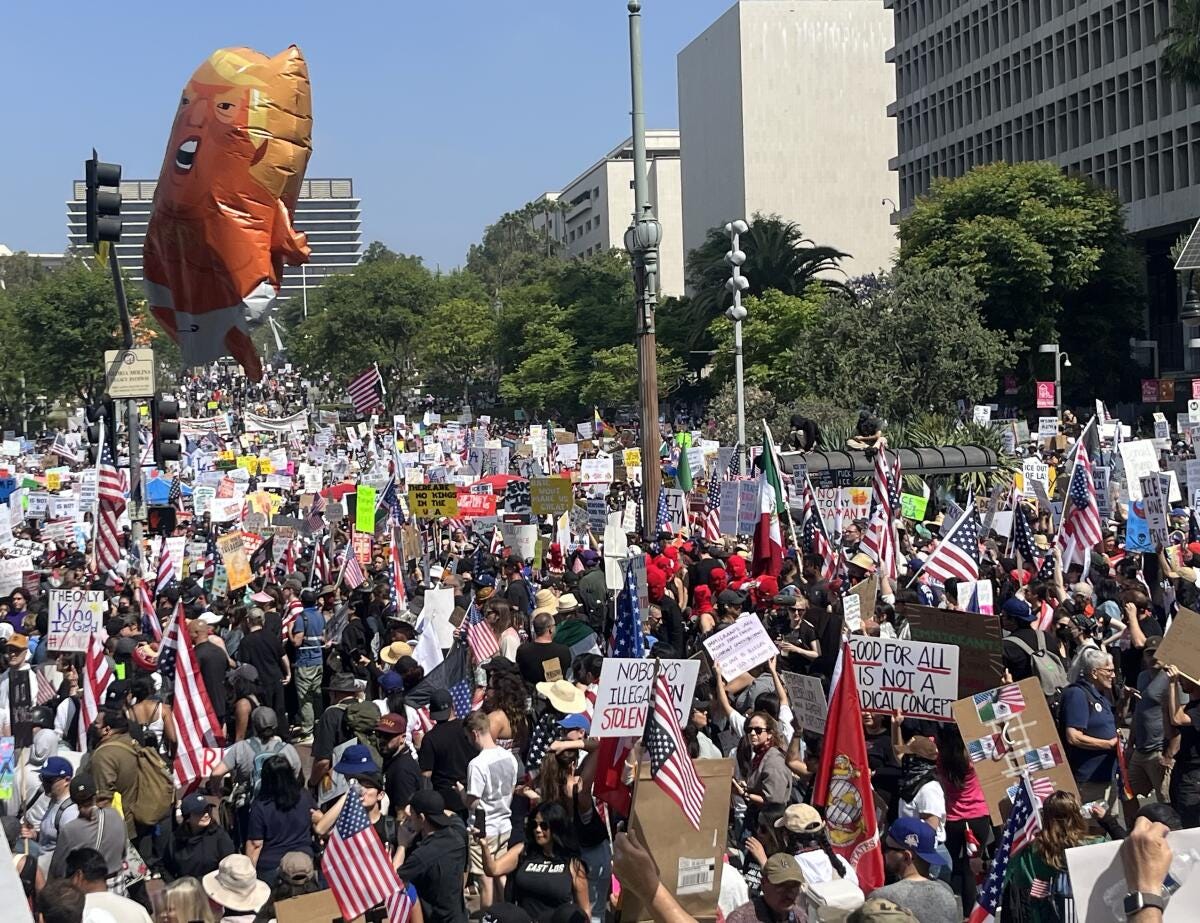The Incredible Energy that Shook America Last Week Is About to Be Wasted
No one had a plan for what to do next...but maybe there's still a chance
Hi everyone, and a HUGE thank you to all of the new subscribers—especially paid subscribers—to Worth Knowing. This work is supported by you. Right now, I’m launching a push to ask people to become paid subscribers and to help me keep building. I’ve already added more help (we’ve got an intern, who you’ll meet soon!) and I’ll be adding more content exclusively for paid subscribers shortly. If you’re currently a Notes App follower or a first-time visitor, please consider becoming a free subscriber, and if you’re a free subscriber, please consider becoming a paid subscriber. Thanks!
In the classic South Park episode “Die, Hippie, Die” the town is besieged by “college first semester know-it-all hippies” who spout high-minded lines about how evil corporations are destroying society and need to be “taken down” (here’s a clip of the college kids’ arrival—it’s worth the one-minute view time):
What’s their solution for accomplishing the big takedown? Get everyone together for a rally and music festival.
So after a massive crowd nine miles across gathers to listen to jam bands and smoke weed, one of the town kids says “it seems like we’ve got enough people together now, when do we start taking down the corporations?” The hippies, of course, have no idea.
If you think that I’m trying to draw a comparison to last weekend’s “No Kings” protests (yes) and that it’s a bit glib (guilty) and even dismissive (um, yes, sorry about that), it’s at least for a reason: I really don’t want the anti-Trump forces in America—meaning mostly the Democratic Party—to fall into the same trap of getting together for a group howl and then simply hanging a “Mission Accomplished” banner.
And that appears to be exactly what’s happening.
Mea culpa: at baseline, I have very mixed feelings about the value of protest. There are clearly some rewards: a strong protest can create a feeling of solidarity and energy that strengthens your movement and gives permission structure to those who are silently with you to come forward. But here are serious risks: an anemic protest emboldens your enemies, while a tumultuous protest that turns violent often undermines your cause.
The trap is when you get a mixture of the two, a protest that is like the South Park hippy fest— a success in gathering people together that turns into a failure because all it accomplishes is burning up people’s capacity and making them feel like their work is done, and there’s no follow up that actually creates tangible change. It all becomes a flash in the pan.
The good news is that the No Kings protests definitely dodged the major risks of anemia or violence. The bad news is that as this week has gone on, they seem to be sliding into the trap. The efforts of 5 million people risk becoming, to steal from the Bard, “a tale told by an idiot, full of sound and fury, signifying nothing.”
Protests are catalysts. A starting point, not an outcome unto themselves. The 1963 March on Washington would have been nothing but a painful memory—more painful for Martin Luther King Jr.’s spellbinding oratory—if it had not led to actual action on the Civil Rights Act of 1964 and the Voting Rights Act of 1965. The 250,000 people who marched that day gave a powerful impetus. But converting it into meaningful change required specific, focused, and courageous action on actual legislation.
So far, there are no signs that anyone at Democratic Party headquarters had ideas beforehand for what to do with this much popular energy. Or any ideas since.
At least there are two pieces of good news. For one, the No Kings protests were 20 times bigger than the March on Washington. That’s a lot of momentum. For another, there’s still time. True, it would have been better if a tightly organized, focused Democratic Party had been on one coordinated message coming out of the day (stop the Medicaid Steal, kill the Trump tariff price gouge, boycott Trump-supporting companies, no more corruption…there’s plenty of strong options).
But at least they know there’s an audience, they know there’s energy, they know there’s a hunger for leadership. Your move.




